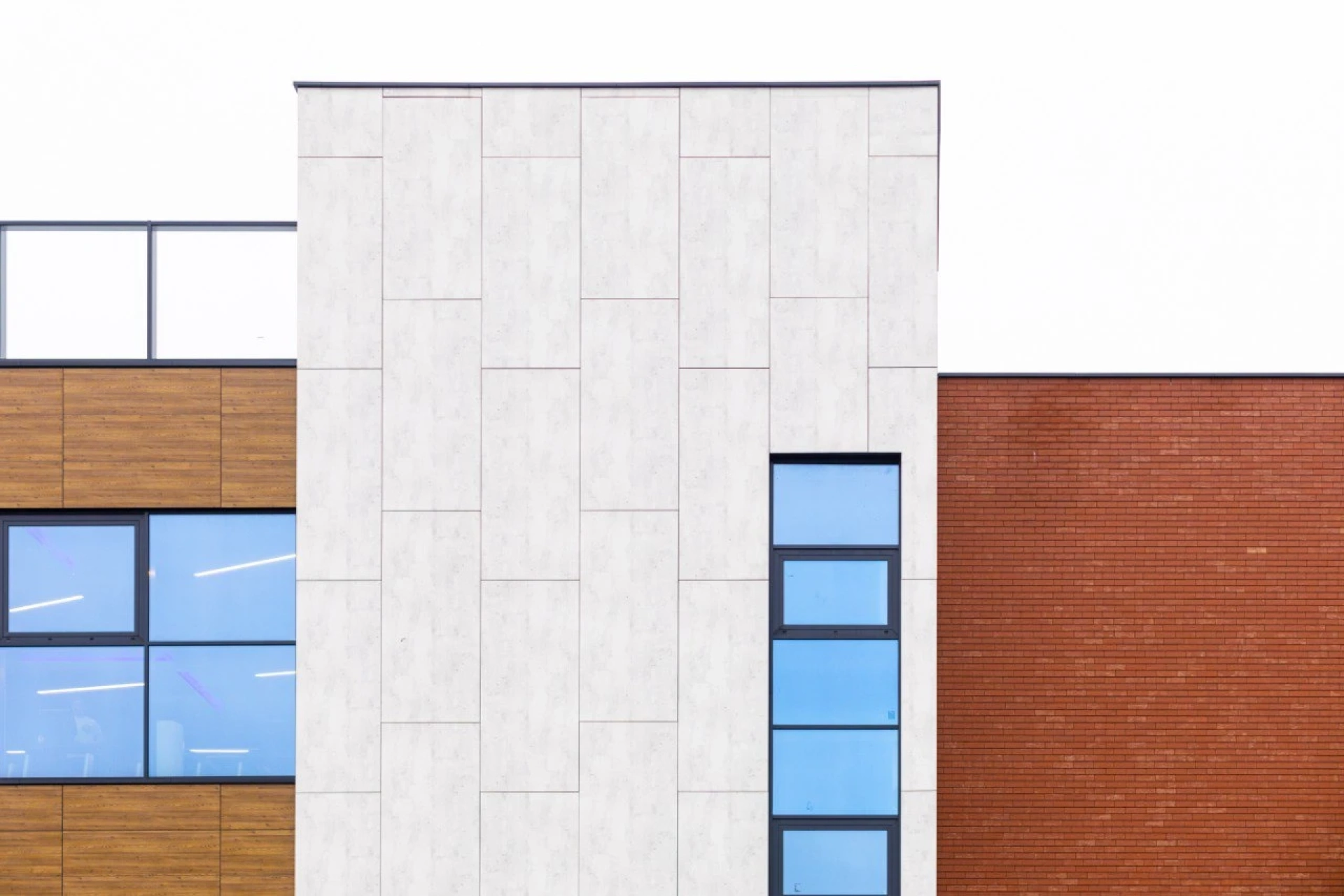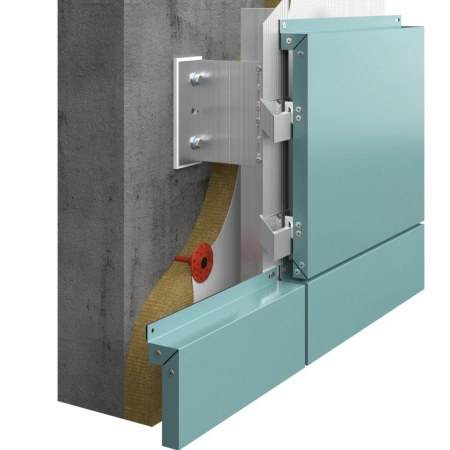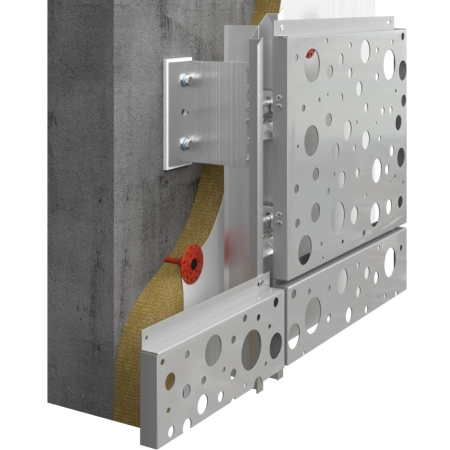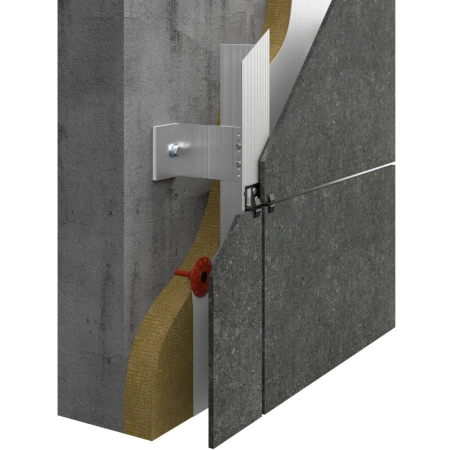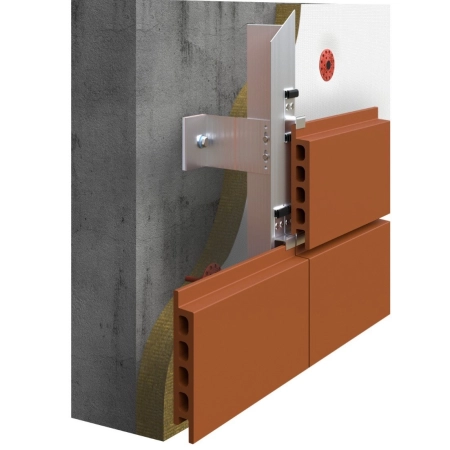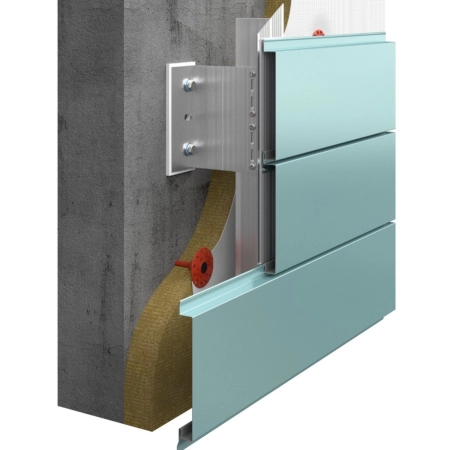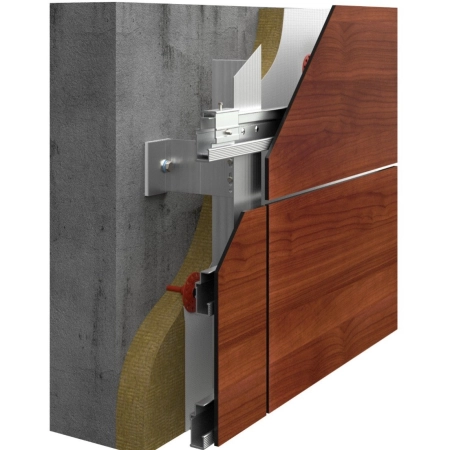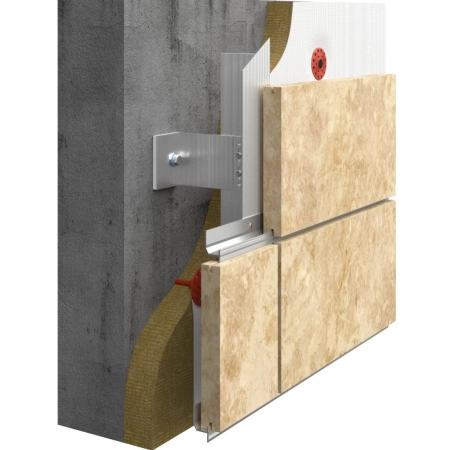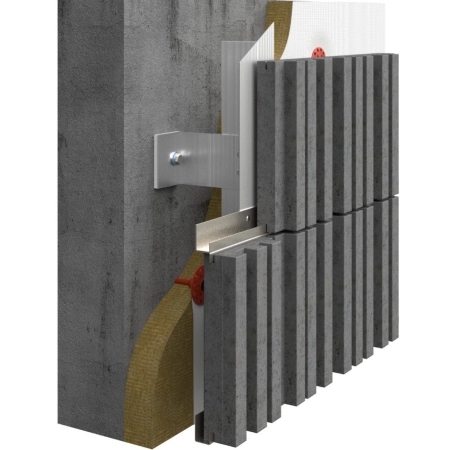Facade cladding
Facade cladding refers to exterior construction works that enhance a building's appearance while providing high thermal, acoustic and waterproofing performance. The rapidly growing trend in facade technologies, along with the wide variety of cladding materials, makes it possible to give almost any type of building - from suburban private houses to shopping centers and residential complexes - a unique appearance tailored to the available budget.
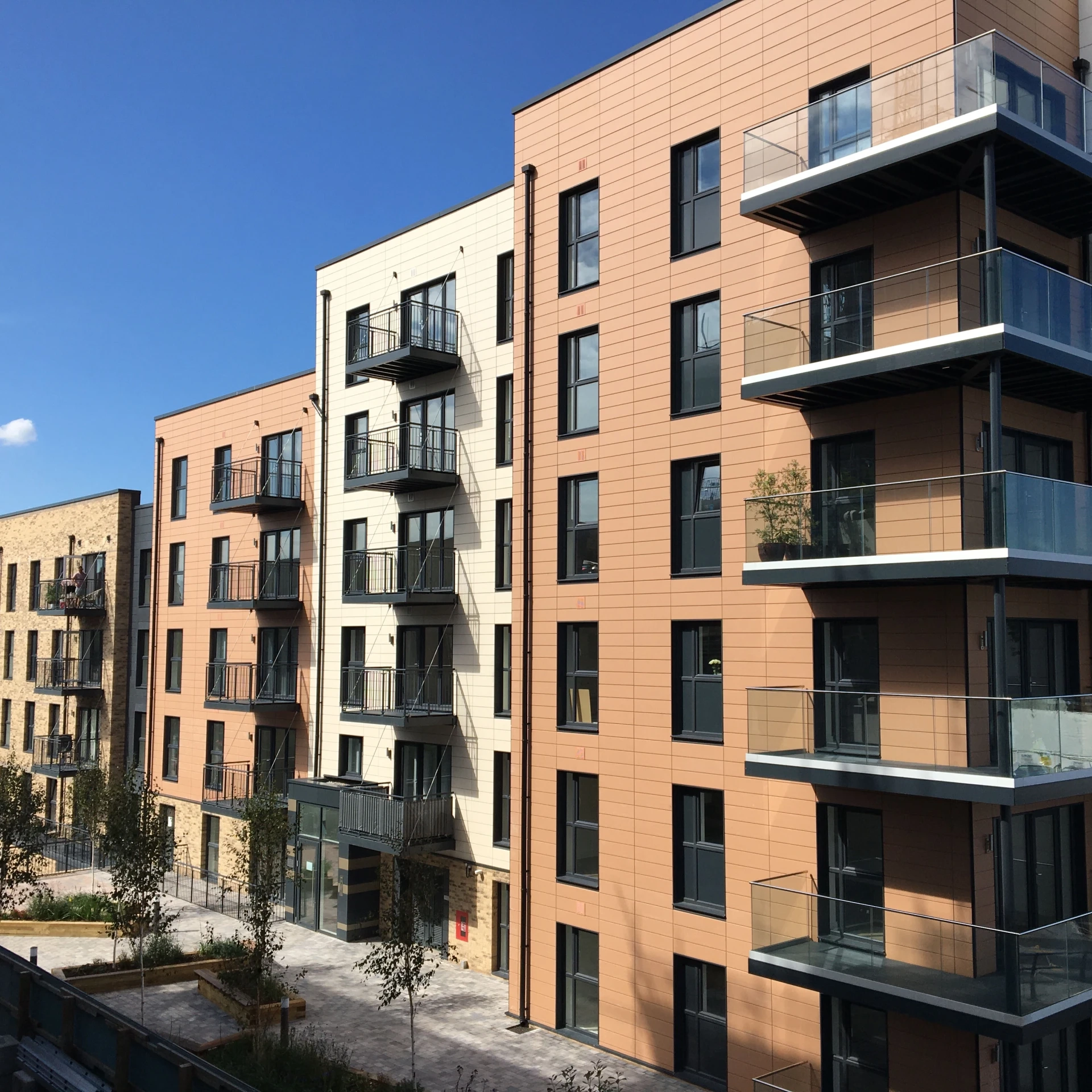
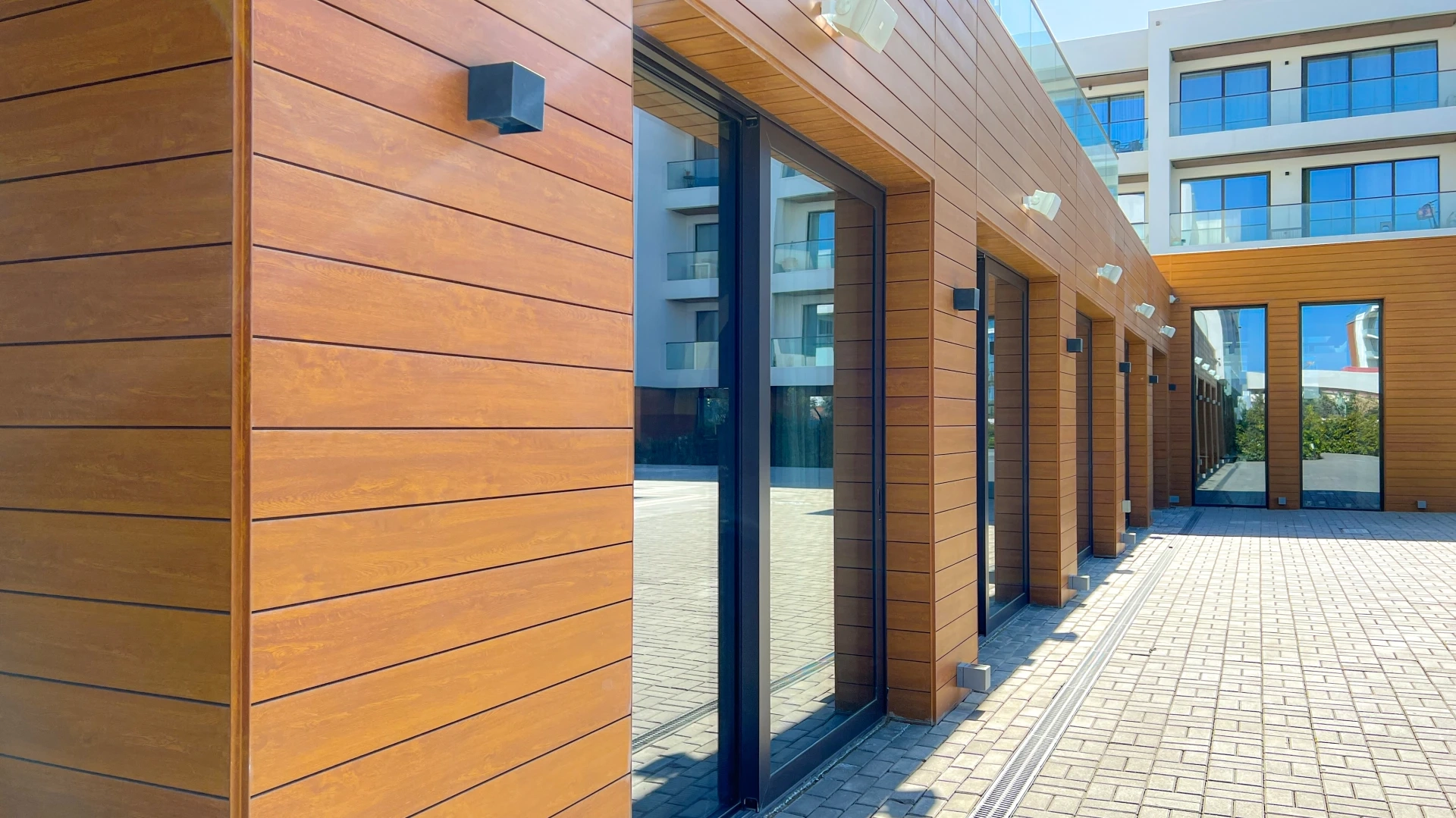
Components
Regardless of the selected cladding material, the structure of insulated facade cladding consists of the same key components:
• Fixing system (Wet and Mechanical facade systems).
• Thermal insulation and waterproofing layer.
• Exterior cladding materials.

WET FACADE SYSTEMS
In wet facade systems, the process begins with the application of a plaster base coat onto the wall. This layer ensures strong and durable bonding of the insulation panels to the building facade. The next layer of the system is the adhesive for the insulation boards. This compound ensures strong and reliable adhesion of mineral wool or other insulation materials to the wall surface. After the insulation is installed, a base coat is applied to level the surface and prepare it for the final decorative render. While the base coat is still wet, a reinforcing mesh is embedded into it. This mesh enhances the durability of the system and increases its resistance to cracking. The final stage involves the application of a decorative render, followed by a finish coat of paint in the color defined by the project specifications.
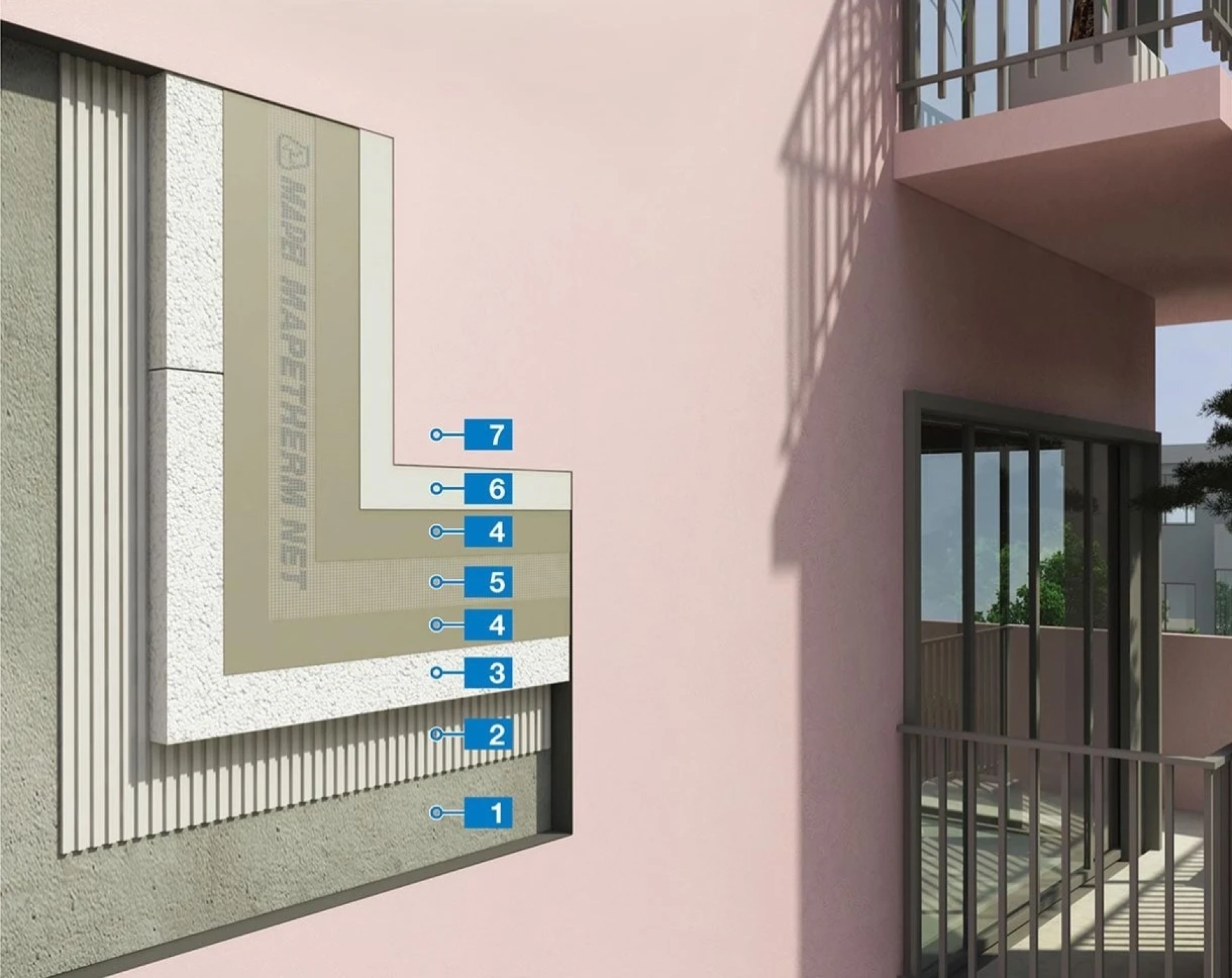
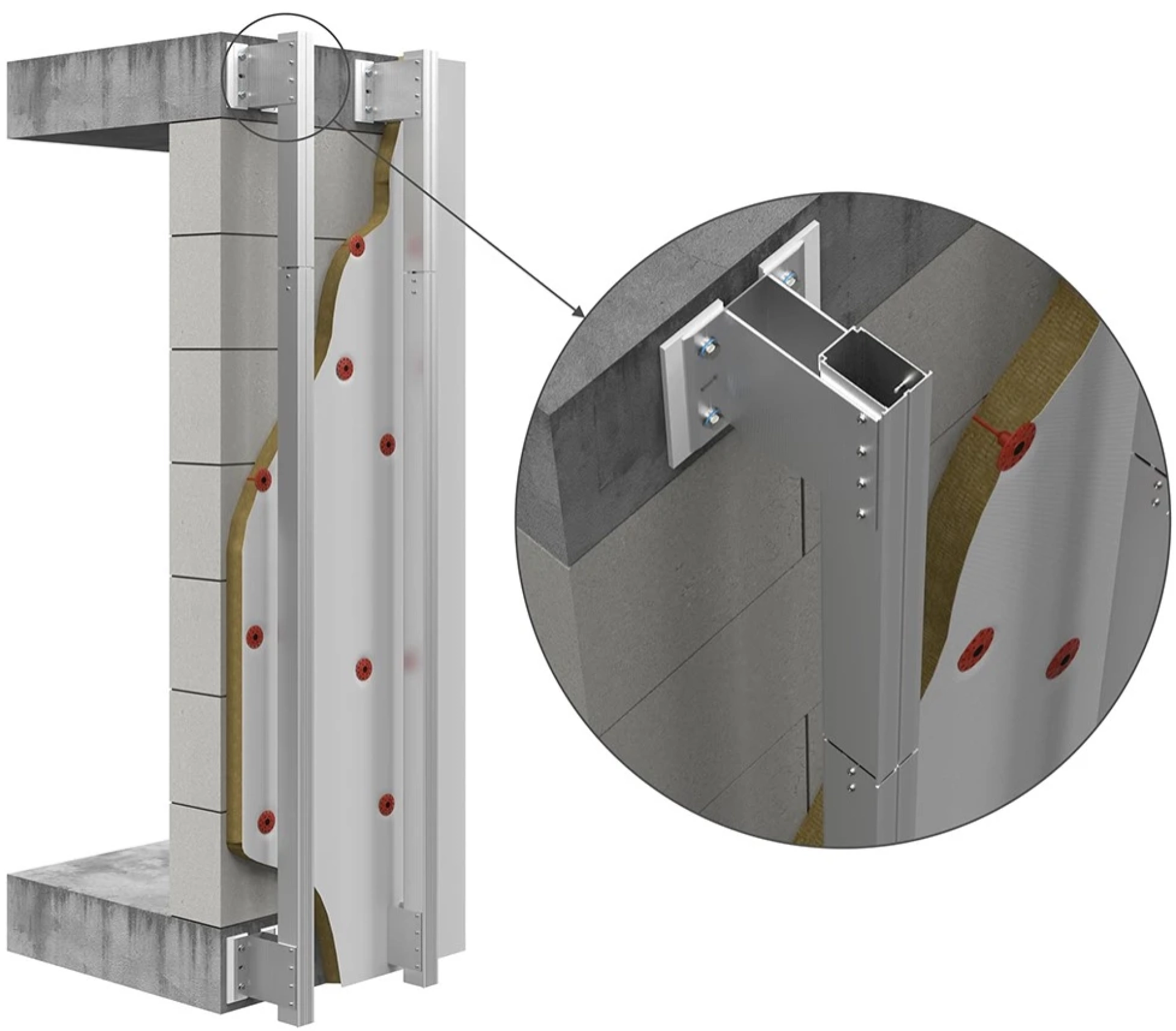
MECHANICAL FACADE SYSTEM
Mechanical systems are applied in ventilated facade constructions. The system comprises a set of connection elements (brackets), which serve as the base for the installation of vertical and horizontal load-bearing guide profiles. The brackets are attached to the wall using special anchor dowels, providing a secure fixation of the profiles to the building and ensuring proper load distribution across the wall. The load-bearing profiles help create a perfectly flat surface for the subsequent installation of facade cladding panels. The connection of the frame elements is carried out using blind rivets.

THERMAL & WATER INSULATION
Thermal and water insulation are among the most important components of a building’s cladding structure. Today, a wide variety of insulation boards are available, each with its own unique characteristics.
The main types of thermal insulation are:
Mineral wool panels
Mineral wool is considered the best type of external insulation. It is also known as rock wool, as it is made from various types of rock. After melting and subsequent processing, the stone forms a wool-like structure. The resulting material is then molded into boards with specific thickness and density.
High-density mineral wool boards are used in wet facade cladding systems because they serve both as insulation and load-bearing elements in this system. The base coat and decorative plaster are applied directly onto the insulation board, which requires the board to have high density and strong adhesion to prevent layer separation.
Polystyrene foam panels (EPS & XPS)
These panels are widely used in the external cladding of facades and more commonly, in the insulation of building basements. They are made from polystyrene using a special technology. They are mainly used in wet cladding facade systems. Polystyrene foam panels are considered to be among the insulation materials with the lowest thermal conductivity.
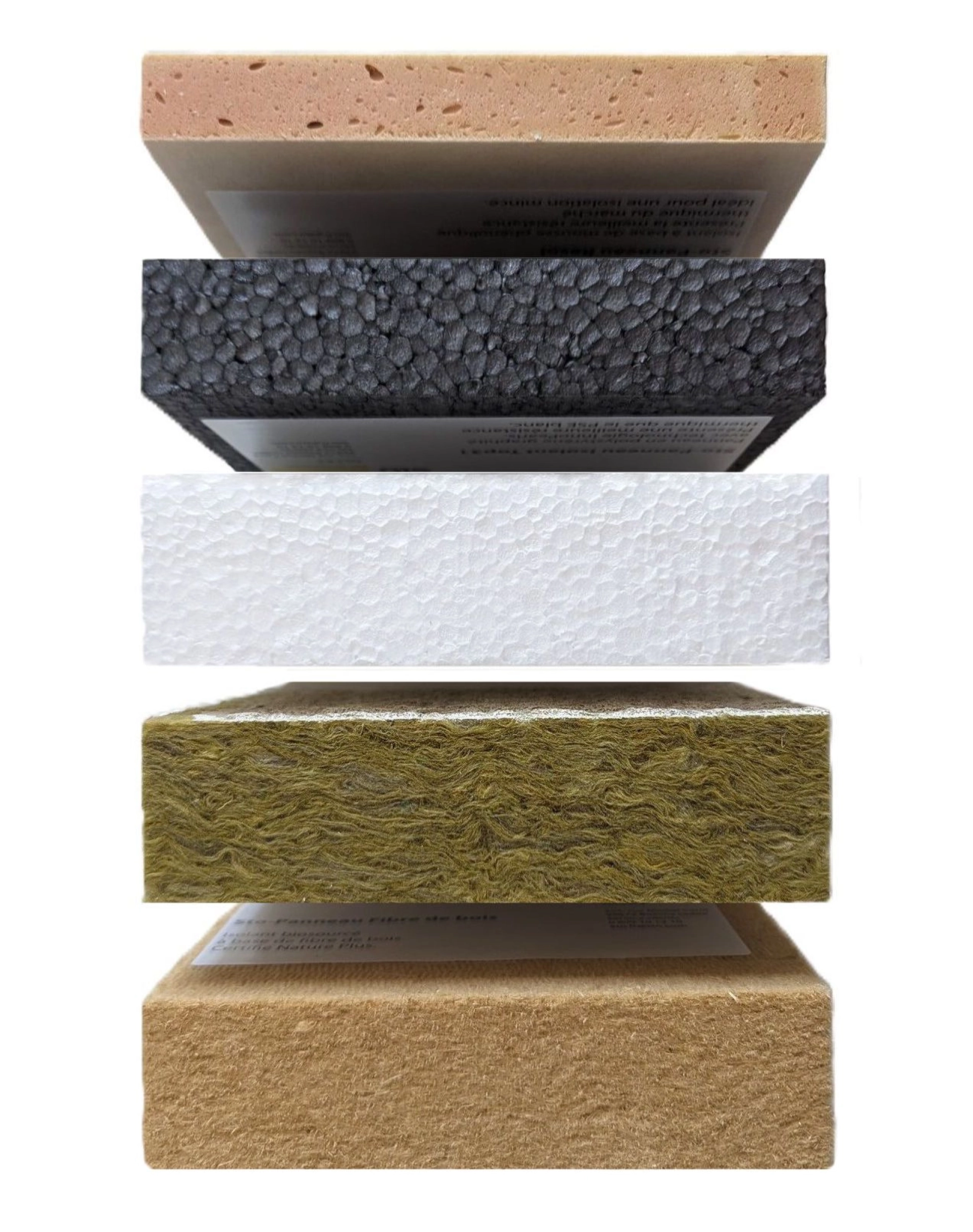
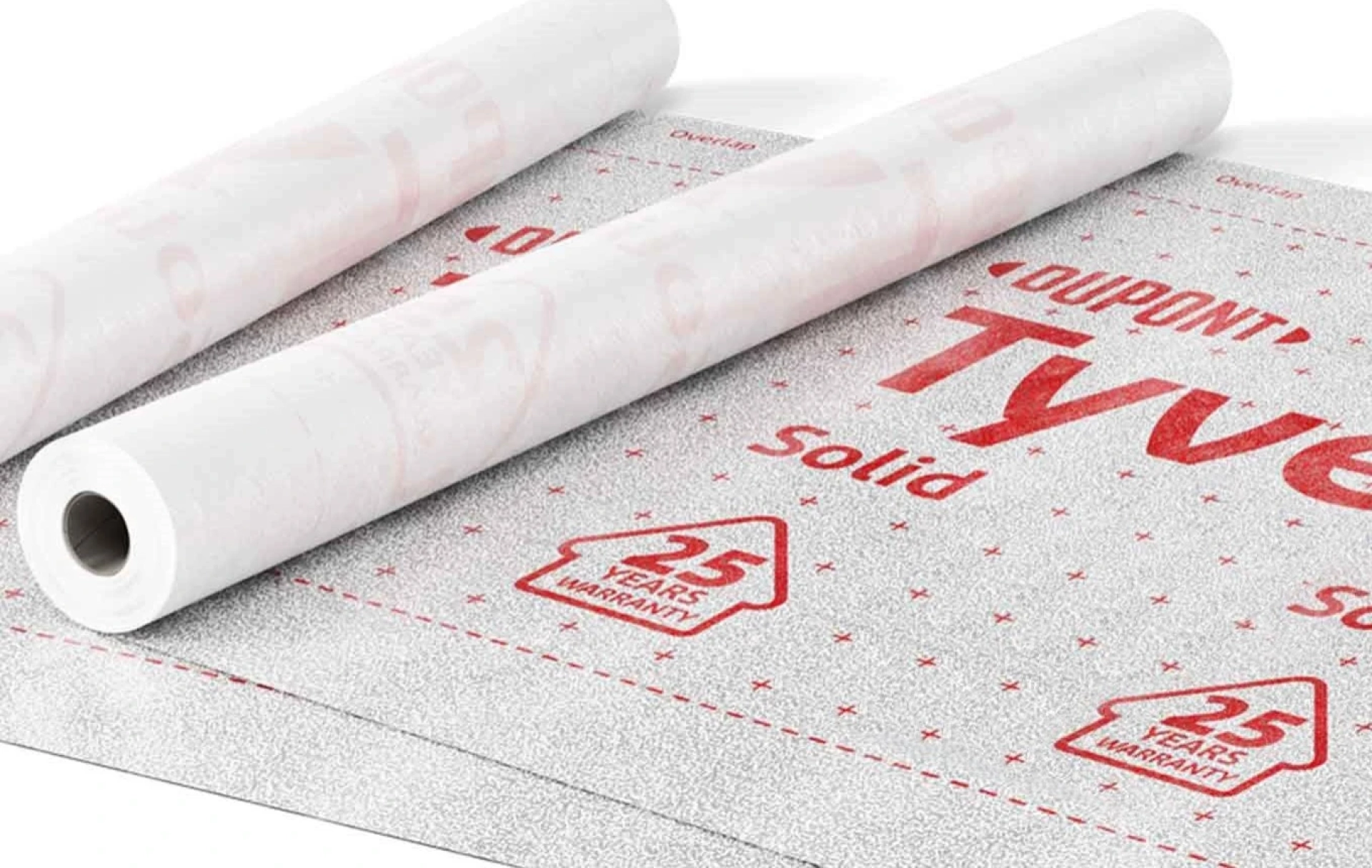
Water insulation
The protective membrane layer is used to cover the wall's thermal insulation from the outside. It is made of high-density polyethylene fibers that protect the thermal insulation layer and the internal frame elements from the wind, prevent them from becoming wet due to rain and condensation (waterproofing), and ensure the unhindered release of water vapor from the insulation panels (vapor permeability).

EXTERİOR CLADDİNG MATERİALS
There is a wide range of cladding materials available, and the aesthetic possibilities are nearly endless. This variety allows you to choose the desired type of cladding to suit your project. Some of the more common cladding options in our country are as follows:
• Composite panels
• Metal panels
• Ceramic granite cladding
• Terracotta cladding
• Cottal aluminum facade panels
• HPL (High Pressure Laminate) panels
• Natural stone cladding (granite, marble, limestone, etc.)
• Fiber cement boards and Glass fiber reinforced concrete panels, etc.
